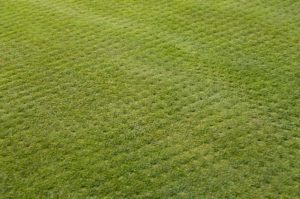
Remember these tips to care for your lawn after aeration from Scientific Plant Service.
Aeration is a crucial lawn care practice that involves creating small holes in the soil to let air, water, and nutrients reach the grass roots more effectively. Scientific Plant Service recommends this service in early fall. However, after aeration, it’s essential to follow specific steps to ensure your lawn recovers quickly and thrives. Here are our top tips for taking care of your lawn after aeration.
Mow with Sharp Blades
After aeration, your lawn will be in a sensitive state as it begins to heal and strengthen. Mowing with dull blades can tear the grass, causing stress and making it more susceptible to disease. Make sure your mower blades are sharp to create clean cuts that promote healthy growth. If possible, wait a few days after aeration before mowing to give the grass time to settle.
Water Consistently
Proper watering is critical to helping your lawn recover after aeration. Watering consistently ensures that the grass roots can access the moisture they need to grow deeper and stronger. However, avoid overwatering, which can lead to waterlogged soil and hinder root development. Try to water your lawn deeply but infrequently, providing about 1 to 1.5 inches of water per week, either from rainfall or irrigation.
Wait to Apply Weed Control
After aeration, it’s best to hold off on applying weed control products for a few weeks. The small holes created during aeration can allow herbicides to penetrate the soil more deeply than intended, potentially harming your grass. Give your lawn time to recover and establish itself before introducing any chemicals. This waiting period also allows your grass to grow thicker and stronger, which naturally helps to crowd out weeds.
Reduce Foot and Equipment Traffic
Your lawn may be more vulnerable to compaction right after aeration, so it’s important to reduce foot and equipment traffic as much as possible. Avoid walking on the lawn or using heavy equipment like wheelbarrows or lawnmowers, especially in the days immediately following aeration. Reducing traffic helps the soil stay loose and allows the grass roots to expand without issue.
Taking proper care of your lawn after aeration helps achieve the best results. By following these tips, you can help your lawn recover quickly, grow thicker and healthier, and stay strong throughout the year. At Scientific Plant Service, we’re here to help with all your lawn care needs. Contact us today to learn more about how we can help you achieve a beautiful, healthy lawn year-round.
Scientific Plant Service Is Your Go-To Source In Landscape Healthcare
Scientific Plant Service, located in Baltimore, is a privately owned corporation, chartered in Maryland in 1957 by Frank J. Burke. We started as a full-service Arborists specializing in the care of shade trees and ornamental shrubs, but today we are a Lawn Care company that is a huge part of the community. From aquatic environments and snow management to deer and mole control, SPS has services tailored specifically for your lawn and landscape.
We offer services in Maryland, Washington, DC, and Virginia, including: Harford, Baltimore, Carroll, Frederick, Howard, Anne Arundel, Montgomery, Prince Georges, Talbot, Queen Anne’s, Calvert counties in MD, as well as Loudoun County, Fairfax County, Arlington, Alexandria, and Falls Church in VA. For more information, contact us online, or call us at 410-321-0970. Be sure to follow us on Facebook, Twitter, LinkedIn, Instagram, and Pinterest.

